 |
SRGC Bulb Log Diary |
| Home Recommend This Site To A Friend |
|
Bulb log 25 ----- 16th June 2004 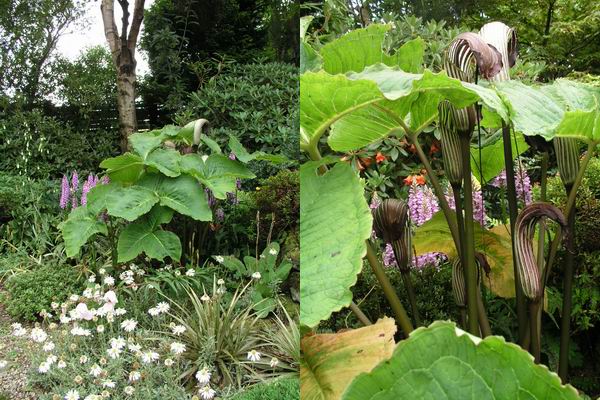 Arisaema elephas x2 I first showed you Arisaema elephas a month ago, in log 21, when the flowers were on short stems. Here it is now, still in good condition but looking very majestic at around I meter tall with the flowers just reaching through the leaves. 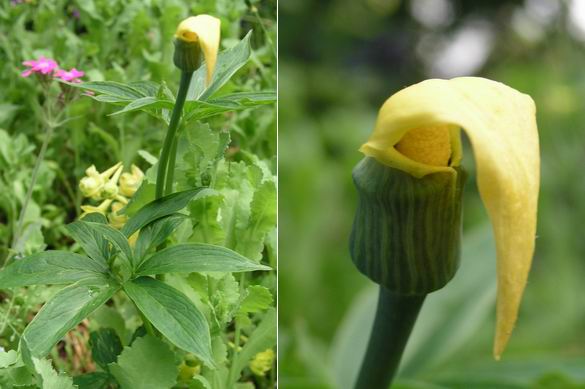 Arisaema flavum I love Arisaema flavum with its wee yellow flowers. We have a few different forms, one is very short and flowered six weeks ago. This one has a taller stem but still a small yellow flower. It is said that people either love or hate the Arisaemas. I cannot understand how anyone could hate these fascinating plants which have so much to offer the gardener. If you hate them I am sorry but I am going to show you another.  Arisaema consanguineum I always worry that we have lost some of our Arisaemas but I am just too impatient, as many do not come through the ground until late June and July. Arisaema consanguineum is in full flower just now and we have several stems appearing in this bed. Not in a clump like elephas but spaced at around 30cms, their tubers must send out stolons to place young plants a slight distance from the main bulb. Because we grow so many bulbs in pots we have to start repotting as soon as they go dormant, this is not the ideal time. Ideally I would like to repot all my bulbs on the August 31 the day before they receive their first watering but this is not possible. 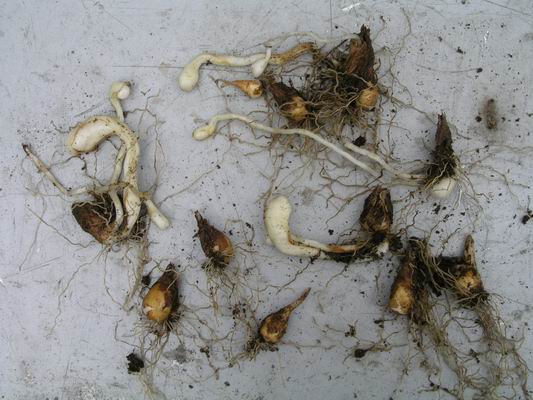 Erythronium americanum Erythronium americanum is another bulb that sends it young bulbs out on stolons. These are the bulbs of our best flowering form (now named 'Craigton Flower') each bulb sends out two or three stolons. Some forms use up all their food supply in sending out so many stolons that they do not form a flowering size bulb - that is the proliferating form which produces masses of single leaves. 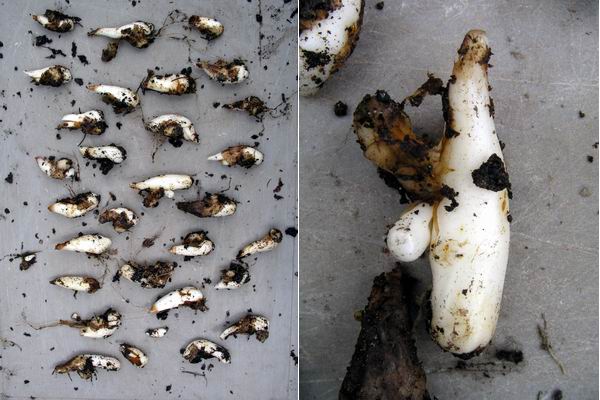 Erythronium japonicum bulbs I have also repotted some of the Erythronium japonicum bulbs. The old bulb on these does not disappear completely but remains attached to the new bulb and after several years it forms a chain-like structure on the back of the new bulb, you can see the start of the chain on the close up. 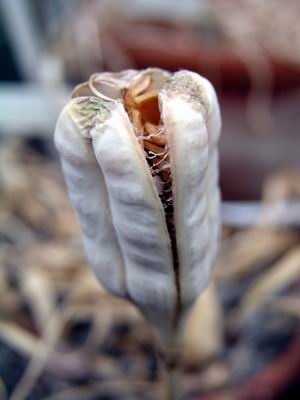 Frit alburyana seed pod The frit seed pods are now starting to open so I am collecting the seed and I will store it in dry paper packets for the summer - it will get sown in August/September. 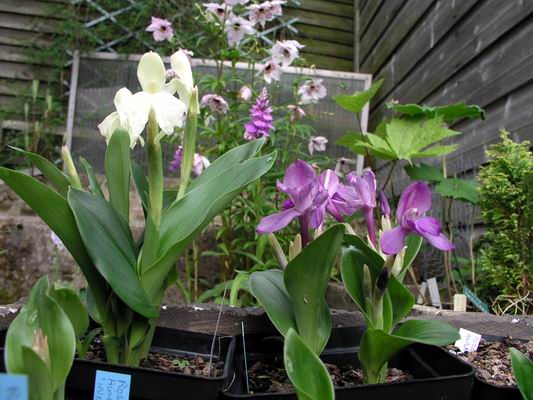 Roscoea in pots The first of our Roscoea in pots are in flower now, they are so exotic looking that many non gardening visitors ask if they are orchids. 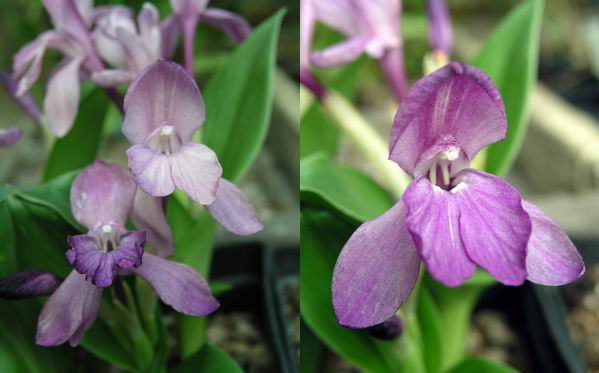 Roscoea humeana My favourite is Roscoea humeana it has large flowers that just poke out of the leaves as they open. 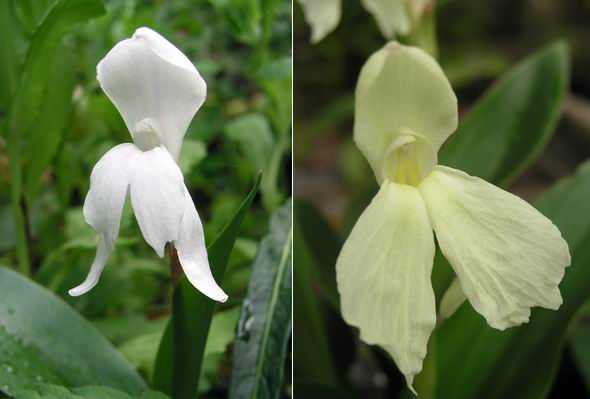 Roscoea humeana x2 Apart from shades of purple, Roscoea humeana comes in pink, white and yellow. I have still not worked out if this yellow form is true R. humeana, a hybrid with cautleyoides, or something else. If any of you can tell me I would be very pleased. 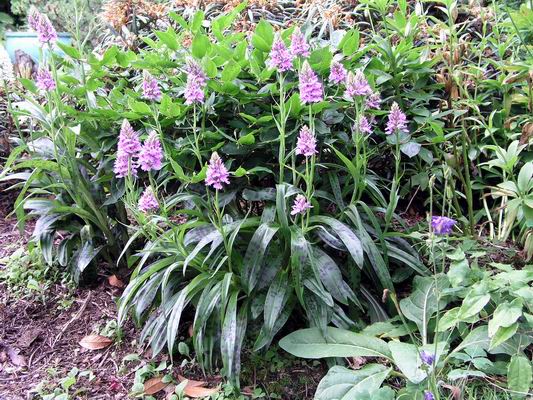 Dactylorhiza clump June is also the time for the Dactylorhiza orchids - this clump started out as a self sown seedling in our garden. We have never managed to germinate Dactylorhiza seed in a seed pot, we gave up trying years ago, but we scatter the seed around the troughs where it germinates well. 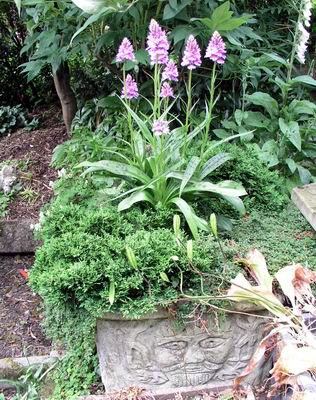 Dactylorhiza in trough The seed seems to do best in a trough that is very mature and receives no disturbance. This is a trough that has been planted for 20 plus years with two dwarf conifers and a prostrate cotoneaster, the most unlikely place you would think for dust-like seed to be able to grow. Seedlings also appear in pots of Lilies that sit beside the back steps and only get repotted every three years or so. 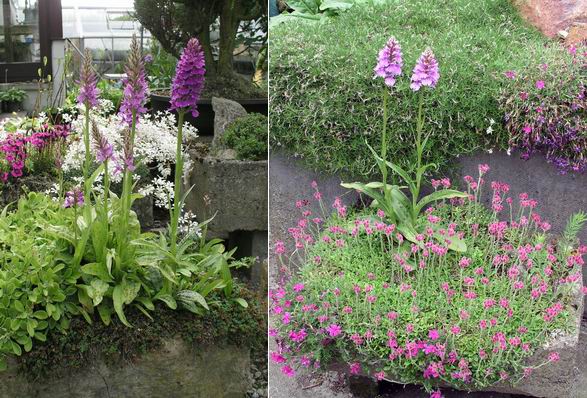 Dactylorhiza x2 Here are two more troughs chosen by the Dactylorhiza. When plants choose their own site like this who is the gardener to argue? ^ back to the top ^ |